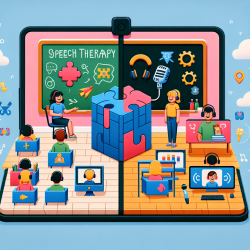Understanding Puberty: A Critical Phase for Health Promotion
Adolescence marks a transformative period in a young person's life, characterized by physical, psychological, and social changes. For adolescent girls, navigating these changes can be particularly challenging. A recent study titled Knowledge, Attitudes, and Coping Strategies Regarding Pubertal Changes Among Adolescent Girls sheds light on the importance of education and effective coping strategies during this pivotal time.
Key Findings from the Study
The study, conducted among 570 female secondary school students in Karaj, Iran, revealed several critical insights:
- High Knowledge Levels: Approximately 85.1% of participants exhibited high knowledge about puberty.
- Positive Attitudes: 66.7% of the girls had a good attitude towards pubertal changes.
- Coping Strategies: Despite high knowledge and positive attitudes, 54.2% of the girls predominantly used avoidance-oriented coping strategies.
Implications for Practitioners
These findings highlight a crucial gap: while knowledge and attitudes are strong, the coping strategies employed are not always effective. As practitioners, it's essential to focus on the following areas:
- Continuous Education: Implement ongoing educational programs in schools to reinforce knowledge and positive attitudes about puberty.
- Task-Oriented Coping Strategies: Encourage the development of task-oriented coping mechanisms. These strategies, which include planning and active problem-solving, can help adolescents manage stress more effectively.
- Parental Involvement: Engage parents, especially mothers, in educational initiatives. As primary sources of information, they play a vital role in shaping their children's understanding and attitudes.
Encouraging Further Research
The study underscores the need for further research to explore the most effective educational strategies and interventions. Practitioners are encouraged to delve deeper into:
- Cultural Influences: Investigate how cultural factors influence knowledge, attitudes, and coping strategies among adolescents.
- Longitudinal Studies: Conduct long-term studies to assess the impact of educational interventions on coping strategies and overall adolescent health.
- Gender Comparisons: Explore differences in coping strategies between male and female adolescents to tailor interventions more effectively.
Conclusion
By understanding and addressing the gaps in knowledge, attitudes, and coping strategies, practitioners can significantly improve health outcomes for adolescent girls. Implementing targeted educational programs and fostering effective coping mechanisms are essential steps in supporting adolescents through the challenges of puberty.
To read the original research paper, please follow this link: Knowledge, attitudes, and coping strategies regarding pubertal changes among adolescent girls: Risks and compliances for health promotion in puberty.










